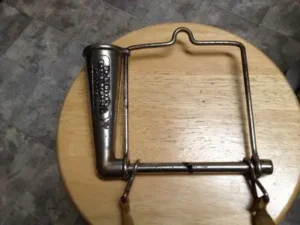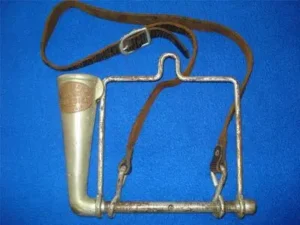Exploring Equine History: The Antique Horse Drencher
In the depths of equine history lie artifacts that tell tales of days gone by. Among these relics is the antique horse drencher, once an essential tool in veterinary care for horses. Passed down from a father to his offspring years ago, this artifact offers a tangible connection to the past, illuminating the evolution of veterinary practices in the equestrian realm.
The Role of the Early Draught-Horse Drenching Bit
During the mid-20th century, the early draught-horse drenching bit held significant importance. Veterinarians of that era relied on this innovative device to administer remedies like paraffin oil, castor oil, or epsom salts to colicky horses. Crafted from brass and featuring a leather strap with a brass funnel, the bit resembled a conventional horse bit, with a rope attached to facilitate lifting the horse’s head for drenching.

Transition to Modern Veterinary Techniques
The process involved pouring the drench into the funnel, allowing it to flow through the hollow bit and into the horse’s throat. While effective for its time, advancements in veterinary science led to safer and more efficient techniques. From the 1950s onwards, veterinarians shifted to using stomach tubes passed through the horse’s nostrils for drench administration, rendering drenching bits obsolete.
Craftsmanship and Design
A closer examination reveals meticulous craftsmanship in brass, showcasing the equestrian world’s dedication to functional design. The combination of the leather strap and brass funnel underscores the attention to detail required for such a tool. This particular drencher was likely tailored for larger horses, demonstrating the versatility of veterinary tools to accommodate different equine sizes.

Reflections on the Antique Horse Drencher
Contemplating the antique horse drencher transports us to an era marked by ingenuity and resourcefulness in equine veterinary care. This artifact serves as a testament to the dynamic nature of veterinary science, where innovations continually redefine practices. Preserving such relics not only pays homage to the past but also offers valuable insights into the timeless journey of caring for our equine companions.
